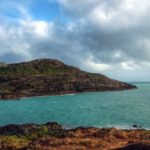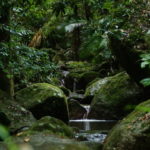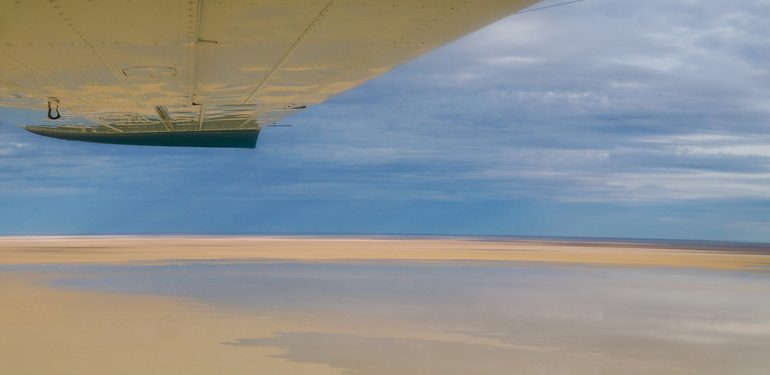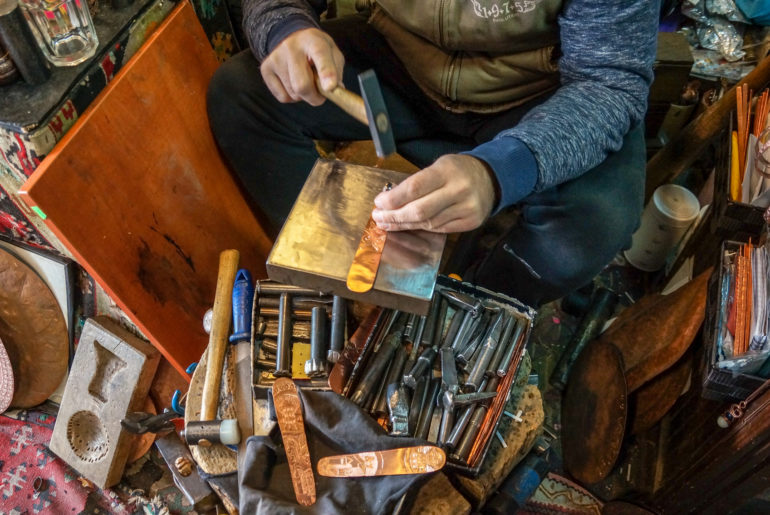The painting hung in our living room over a bookcase. It was a bush setting at sunset. The colours were rich oranges and reds and the people walking among the trees were black. Dad bought it in Cairns in the early 1980s. He liked that it was a simple, yet poignant scene; and the little black dingo sniffing around a log.
The artist was Percy Trezise. The land was Quinkan Country in Far North Queensland.
I grew up with that painting in our house, clueless to what it represented. Dad also bought a children’s book by the same artist, which I doubt I’ve looked at in two decades. I’d forgotten about the book, but the lanky Quinkan spirits were startlingly familiar when I saw them painted on the side of a rock in the bush.
Our trip up the Cape York Peninsula took us through the heart of Quinkan Country, named for the spirits that live in the area around Laura, a small Aboriginal community about 150km west of Cooktown.
The culture, history and traditions of the Aboriginal people who travelled through Quinkan Country have been passed from generation to generation, tribe to tribe for thousands of years. There were more than 30 dialects spoken on the Cape York Peninsula and art developed as a way for tribes to communicate.
Most Aboriginal tribes were nomadic hunter-gatherers, moving across the country according to the seasons and food. They would draw and paint pictures as a way of recording what they had seen and done. That information was useful to tribes that would later camp at the same spot. They would add their own drawings and over the centuries the drawings grew, becoming a record of the life of the Aboriginal people.
They were the world’s first art galleries.
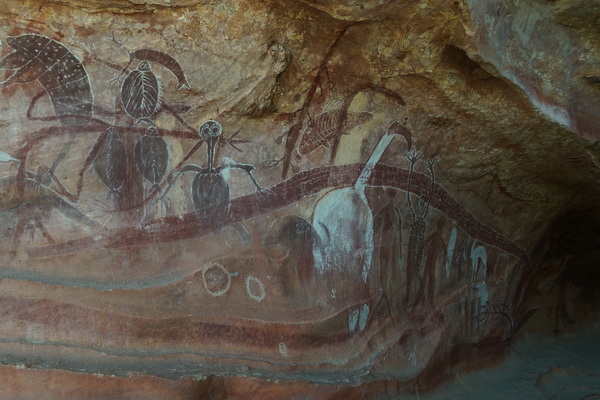
There are thousands of rock art sites around Australia, particularly in the Northern Territory, Western Australia and Queensland. The Quinkan Galleries is one of several rock art sites near Laura closed to public access. A fourth site, Split Rock, is open for people to visit independently, but to explore others such as the Quinkan Galleries, Giant Horse or Mushroom Rock it’s necessary to take a private tour.
The Galleries, a collection of several rock art sites around some sandstone boulders and cliffs, is considered the best for the quality of the art and the significance of the site to the local Aboriginal people. The style of art varies around the country, with Queensland known for simple human and animal silhouettes.
When reading Percy Trezise’s children’s book about the Quinkans or looking at that picture in our living room, I never imagined it was something I could visit or learn more about. It was a very special experience to see the country and art that inspired those works and understand more of the culture and history behind them.
Our guide was Trevor, who was brought to the rock art sites as a boy. His grandfather taught him how to interpret the paintings and now Trevor passes on the knowledge to visitors.
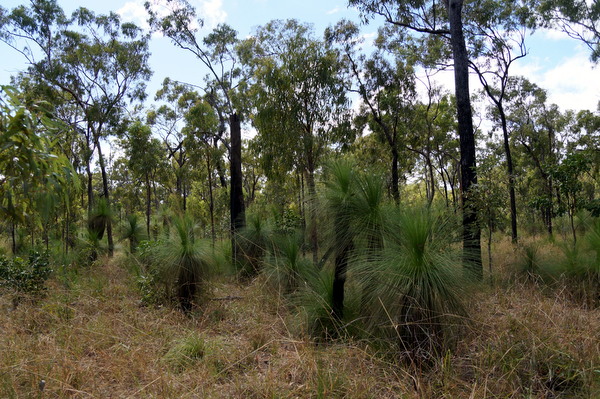
The drive to the Quinkan Galleries reminded me of the landscape in Dad’s painting: thick bush filled with trees, spiky yucca plants and tall grass. Unfortunately the painting was damaged in a house fire so it’s a long time since I’ve seen it, but after looking at it every day for almost 20 years I remember it well. The Galleries are buried deep in the bush – in fact it’s incredible they were ever found. For that the region has Percy Tresize to thank – the man behind the painting.
In 1960, a crew building the first road through Cape York discovered Aboriginal paintings in the bush. Percy, a pilot, assumed there must be more and searched for them, scouring the land around Laura by air. He is credited with discovering many of the sites in the area.
Australian Indigenous Rock Art is the oldest continuous art form in the world and the Quinkan Galleries are regarded as some of the best examples in the country. The Galleries are being considered for World Heritage status, yet at the site there’s nothing to indicate its international or historical significance.
There is only minimal infrastructure; some metal railings to help with the walk down the sandstone stairs and a loose blue rope a few metres back from the first paintings. Tours have been coming here regularly for about 30 years, but aside from boot prints in the sand there’s no sign of the people that have come through this area in that time.
Trevor led us down the side of a huge sandstone boulder and stopped in front of an opening where the rock has broken away and left a small cave, a perfect camp site protected from the elements.
It took a moment to focus on the drawings. I made out a person, kangaroos and handprints, but a lot of the others were just brown shapes and outlines until Trevor talked us through what we were looking at.
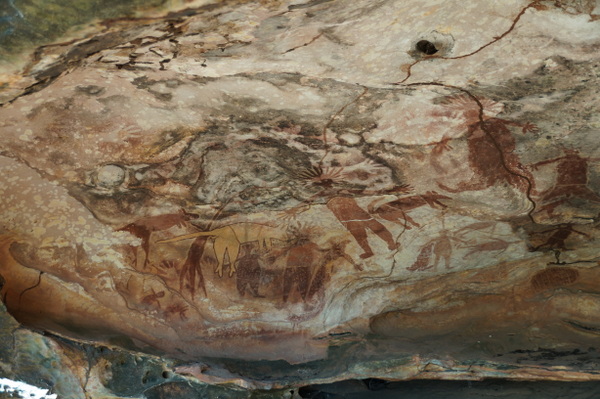
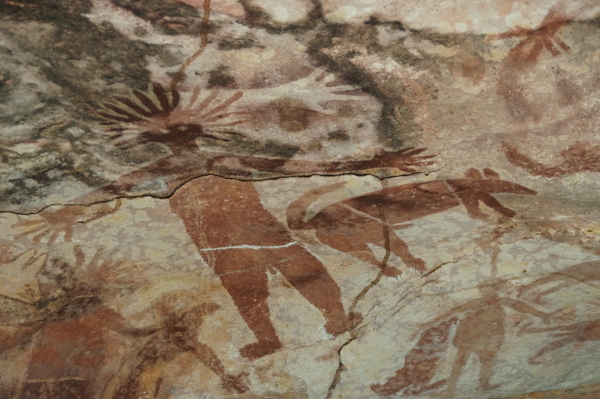
“How old are they?” I asked, impressed by the vivid colours.
“About 40,000 years old,” Trevor replied.
My jaw dropped.
The actual age of the drawings is hard to pinpoint and I’ve seen the age of the Quinkan Galleries estimated between 25,000 and 40,000 years. A fragment found at a rock art site called Narwala Gabarnmang in Arnhem Land in the Northern Territory confirmed as at least 28,000 years old is the oldest firmly dated rock art painting in Australia. But researchers know the country was occupied by humans as far back as 45,000 year ago.
The paintings at the Quinkan Galleries are done with ochre, a rock found in different colours such as red, white and brown. When ground and mixed with water it can be used like paint. Because it’s a mineral it doesn’t erode and that’s why the drawings are as vivid as they are, despite their age.
Most of the images are of animals, most likely what the tribes ate or saw. Trevor said the drawings were used to let other tribes know what tucker (food) they could expect in the area, which included kangaroos, turtles, emus, bats and even a crocodile.
Other images described what they had seen. One wall featured the very distinct outline of a platypus, but they aren’t found this far north. Trevor said a tribe would have seen the animal in southern part of the country and recorded it here. Of course, this is only educated speculation. Although Aboriginal history and culture is passed down to younger generations, the amount of time that has passed since these drawings were done makes it impossible to know for sure what they mean. There are some images that researchers haven’t yet been able to interpret.
The paintings have been layered on top of each other – each tribe adding more each time they passed through the camp. It’s unsure how recent the latest drawings would have been completed, but the Giant Horse Gallery near Laura is named because it features just that – a giant horse – so it’s assumed the drawing was done after European settlement, when horses were introduced to the country.
The Quinkan Galleries also feature the spirits from which the site gets its name. The Quinkan spirits the Timaras, the good spirits, and the Imjims, the bad spirits, are drawn extensively around the sandstone cliffs and caves. Trevor said the spirits were still prominent in local Aboriginal culture and children learn about them at a young age. It’s these figures that brought back memories of reading Percy’s book as a kid.
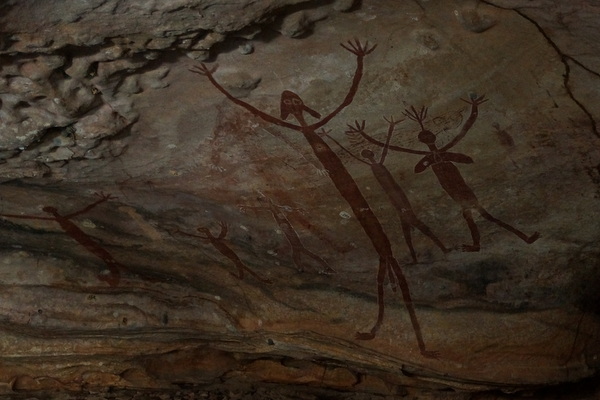
It’s incredibly difficult to comprehend the age of the drawings and the life that existed here so long ago. My eyes were drawn to the stenciled handprints, used as signatures accompanying the work. Handprints, just like mine or yours, except older than any other sign of human existence on the planet.
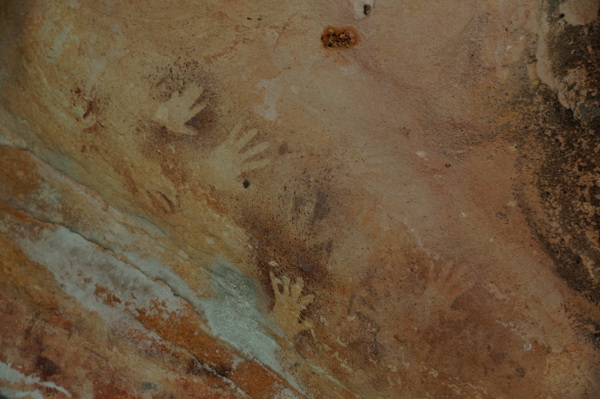
do it yourself
Our visit to the Quinkan Galleries was organised through the Quinkan Regional and Cultural Centre at Laura. The tour lasted about 2.5 hours and we were taken to the site by Trevor in the centre’s vehicle. There were just three of us, so if you have more people than can fit in the car you can follow in your own off-road vehicle. The price of the tour was $160 per person. It is expensive, but I thought it was absolutely worth it. Trevor was a brilliant guide and I have shared only a fraction of what we learnt on the tour. Tours are also available to the Giant Horse Gallery, Mushroom Rock and Split Rock. We were advised we could call the afternoon before to organise a tour for the following day. The contact number for the centre is +61 (0) 7 4060 3457.
The Quinkan Regional and Cultural Centre is one of the best museums and interpretations centres I have seen anywhere. Even if you don’t have time to do a rock art tour while passing through (Laura is on the route to Cape York), the cultural centre is definitely worth a visit. It has displays on the Quinkans, rock art, Aboriginal history and culture and information about European settlement on the Peninsula, including about the stations and telegraph line. I think it’s best to visit the centre when heading north as it will provide some context for the places you see on the road to Cape York. Entry is $5.50 for adults, $15 for families.
Split Rock is the only rock art site in the area that you can visit without a tour. There’s a turn-off and car park about 13km south of Laura and about a 400m walk to the site. The art isn’t nearly as impressive as what we saw at the Quinkan Galleries. There’s very little information about the site except for some basic signs. There is a $5 charge per person, which is paid into an honesty box at the site.







